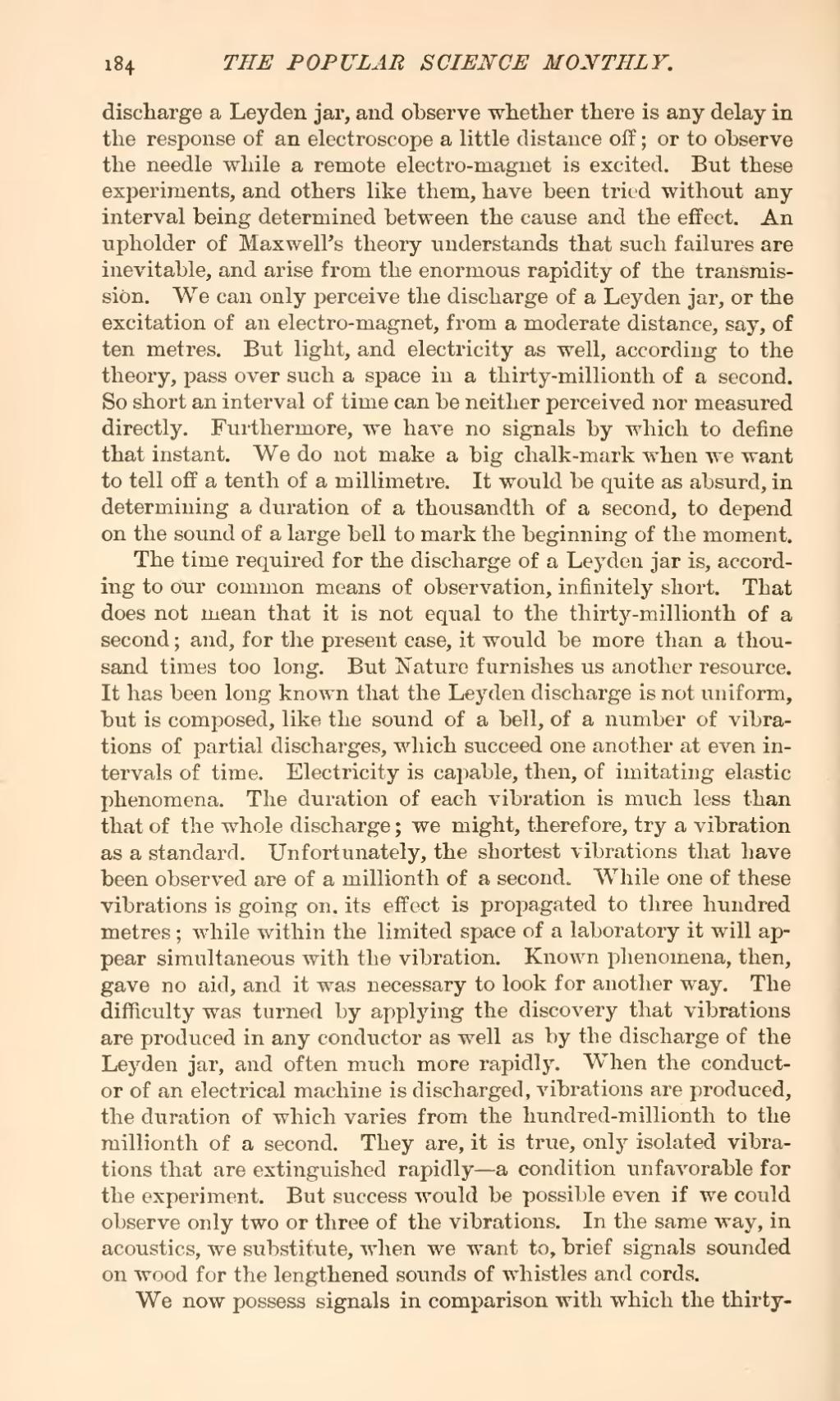discharge a Leyden jar, and observe whether there is any delay in the response of an electroscope a little distance off; or to observe the needle while a remote electro-magnet is excited. But these experiments, and others like them, have been tried without any interval being determined between the cause and the effect. An upholder of Maxwell's theory understands that such failures are inevitable, and arise from the enormous rapidity of the transmission. We can only perceive the discharge of a Leyden jar, or the excitation of an electro-magnet, from a moderate distance, say, of ten metres. But light, and electricity as well, according to the theory, pass over such a space in a thirty-millionth of a second. So short an interval of time can be neither perceived nor measured directly. Furthermore, we have no signals by which to define that instant. We do not make a big chalk-mark when we want to tell off a tenth of a millimetre. It would be quite as absurd, in determining a duration of a thousandth of a second, to depend on the sound of a large bell to mark the beginning of the moment.
The time required for the discharge of a Leyden jar is, according to our common means of observation, infinitely short. That does not mean that it is not equal to the thirty-millionth of a second; and, for the present case, it would be more than a thousand times too long. But Nature furnishes us another resource. It has been long known that the Leyden discharge is not uniform, but is composed, like the sound of a bell, of a number of vibrations of partial discharges, which succeed one another at even intervals of time. Electricity is capable, then, of imitating elastic phenomena. The duration of each vibration is much less than that of the whole discharge; we might, therefore, try a vibration as a standard. Unfortunately, the shortest vibrations that have been observed are of a millionth of a second. While one of these vibrations is going on. its effect is propagated to three hundred metres; while within the limited space of a laboratory it will appear simultaneous with the vibration. Known phenomena, then, gave no aid, and it was necessary to look for another way. The difficulty was turned by applying the discovery that vibrations are produced in any conductor as well as by the discharge of the Leyden jar, and often much more rapidly. When the conductor of an electrical machine is discharged, vibrations are produced, the duration of which varies from the hundred-millionth to the millionth of a second. They are, it is true, only isolated vibrations that are extinguished rapidly a condition unfavorable for the experiment. But success would be possible even if we could observe only two or three of the vibrations. In the same way, in acoustics, we substitute, when we want to, brief signals sounded on wood for the lengthened sounds of whistles and cords.
We now possess signals in comparison with which the thirty--
